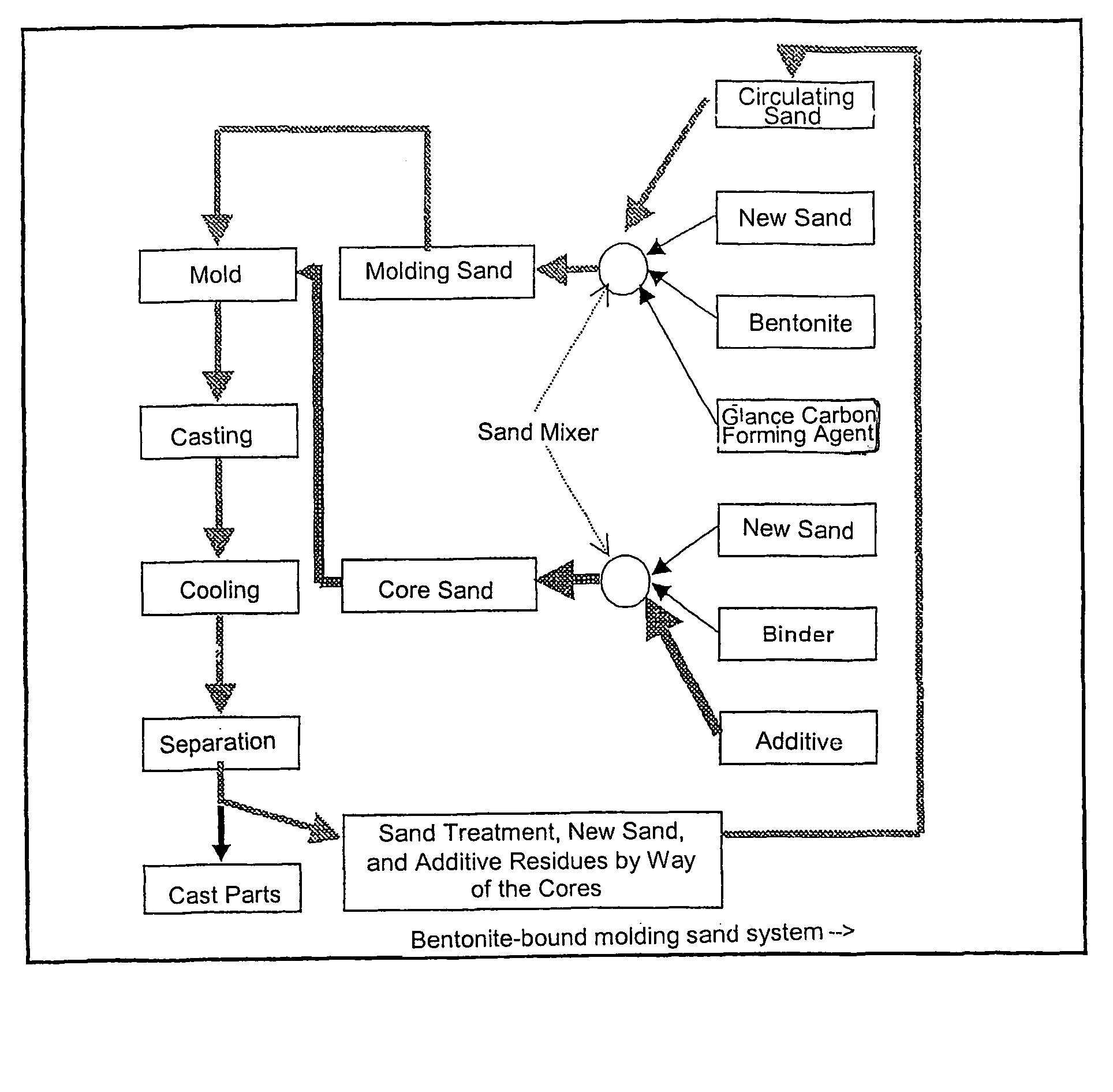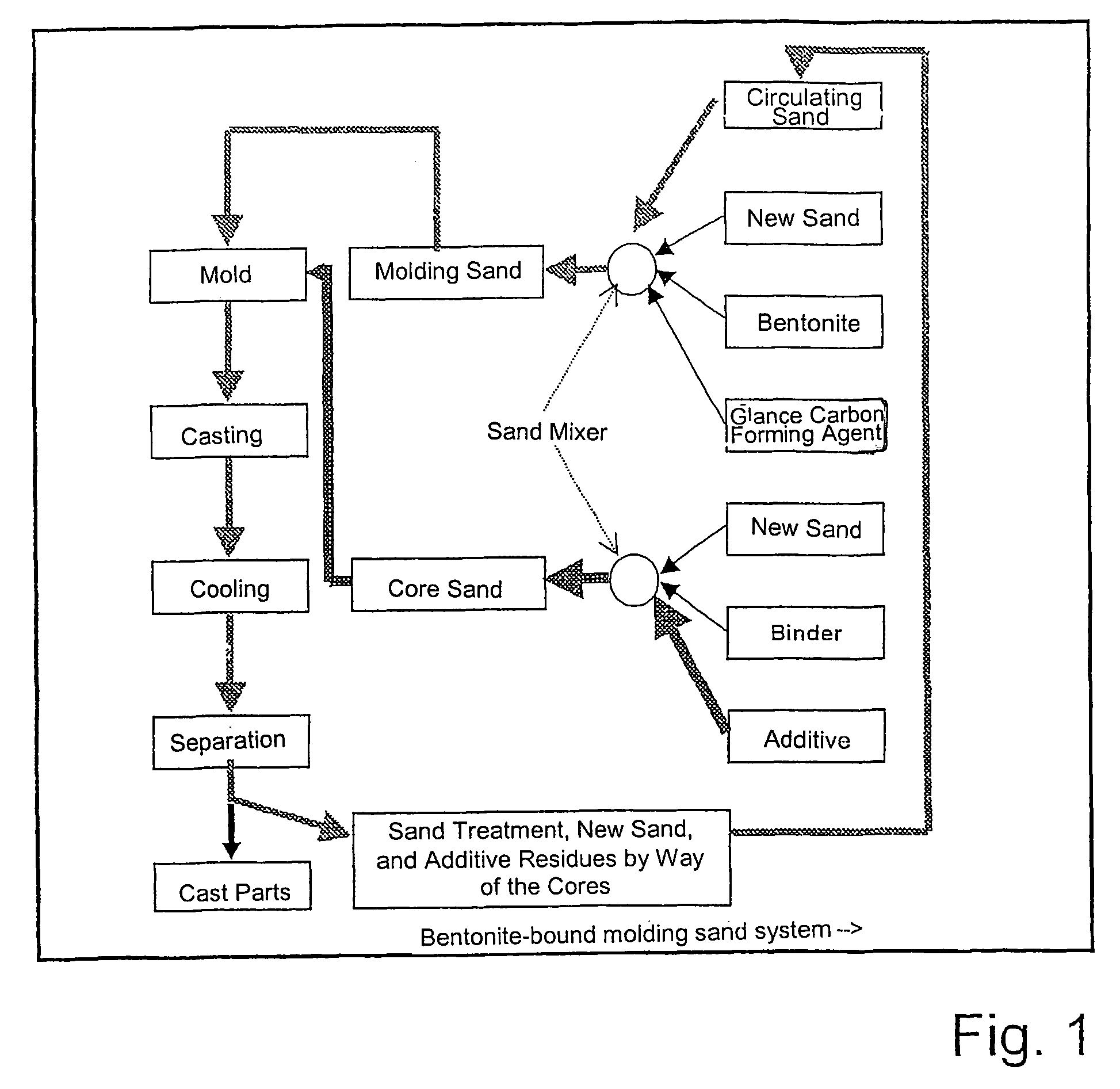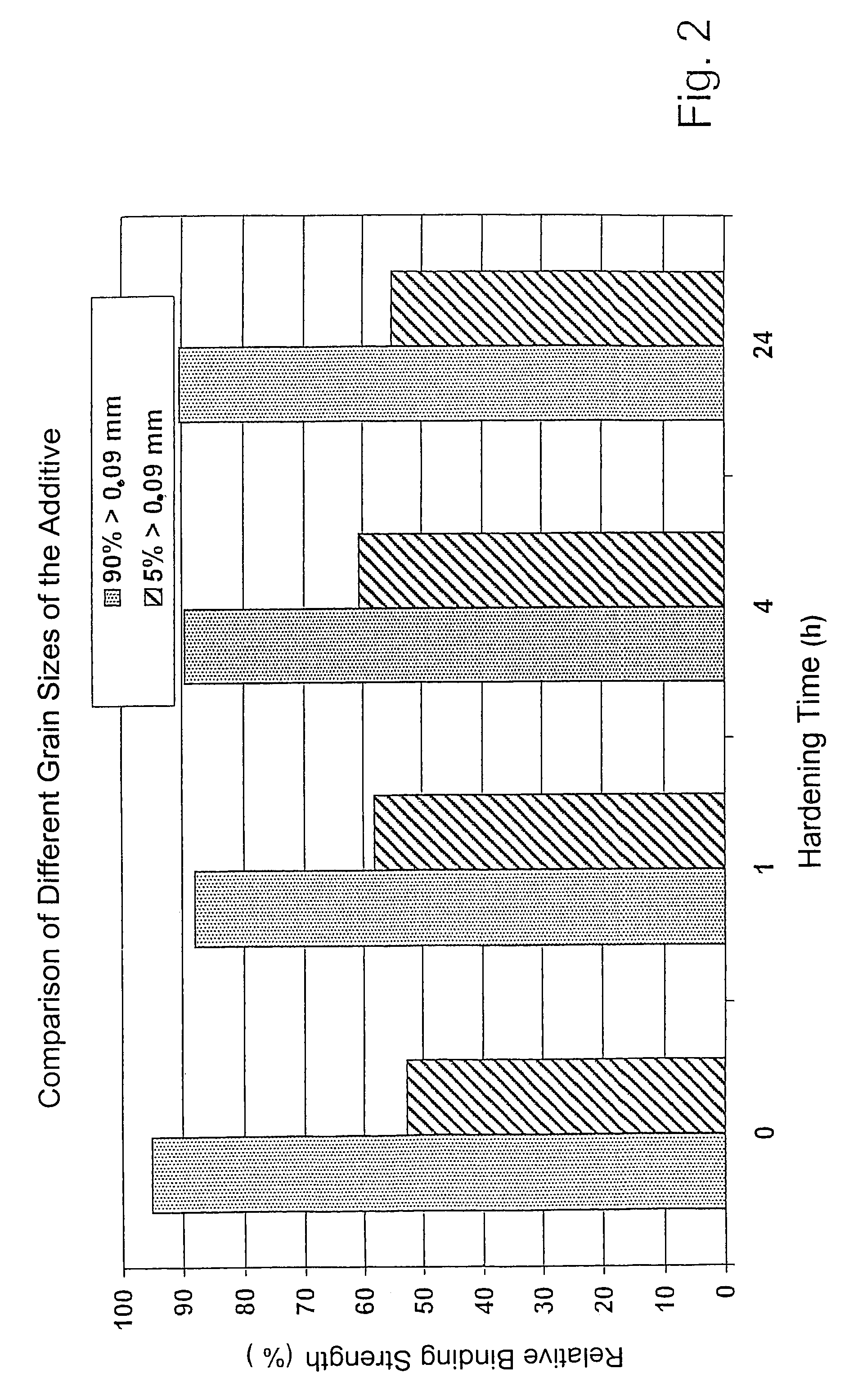Method for the production of a core sand and/or molding sand for casting purposes
- Summary
- Abstract
- Description
- Claims
- Application Information
AI Technical Summary
Benefits of technology
Problems solved by technology
Method used
Image
Examples
Embodiment Construction
[0037]FIG. 1 explains the individual method steps in the production of the mold sand for casting purposes according to the invention. In this connection, a differentiation is made, in the example, fundamentally and not necessarily, between a molding sand for the core of a cast piece to be produced (core sand) and for the outer shape (remaining core sand or molding sand). Both different types of molding sand can, however, be produced according to the same sequence schematic.
[0038]Within the framework of the exemplary embodiment, the core sand is produced from new sand, i.e. from the basic molding material having an average grain size of 0.10 mm to 0.30 mm, and the binder already described (phenolic resin, for example, particularly PUR, i.e. polyurethane resin), as well as the additive of the organic and inorganic component that has been ground to a coarse grain. In contrast, so-called circulating sand, as well as new sand in combination with bentonite and a glance carbon forming agen...
PUM
 Login to View More
Login to View More Abstract
Description
Claims
Application Information
 Login to View More
Login to View More - R&D
- Intellectual Property
- Life Sciences
- Materials
- Tech Scout
- Unparalleled Data Quality
- Higher Quality Content
- 60% Fewer Hallucinations
Browse by: Latest US Patents, China's latest patents, Technical Efficacy Thesaurus, Application Domain, Technology Topic, Popular Technical Reports.
© 2025 PatSnap. All rights reserved.Legal|Privacy policy|Modern Slavery Act Transparency Statement|Sitemap|About US| Contact US: help@patsnap.com



